Resistance to Botox? Let's chat about it
Botox has long been hailed as a miracle solution for reducing wrinkles and maintaining youthful skin. However, for some people, Botox injections may become less effective over time, a phenomenon known as Botox resistance. If you're finding that Botox isn't working as well as it used to, you're not alone. Let's explore what Botox resistance is, why it happens, and what alternative products and treatments can help you achieve your desired results.
What is Botox Resistance?
Botox resistance occurs when your body becomes less responsive to the botulinum toxin, reducing its effectiveness in smoothing out wrinkles and fine lines. This resistance can develop over time and is influenced by several factors, including:
1. **Frequent Injections**: Regular and high doses of Botox can lead to the production of antibodies against the botulinum toxin, rendering it less effective.
2. **Genetic Factors**: Some individuals are genetically predisposed to developing resistance.
3. **Immune Response**: A robust immune system may recognize and neutralize the botulinum toxic more effectively, leading to resistance.
Signs of Botox Resistance
If you're experiencing Botox resistance, you might notice things such as:
1. Decreased duration of the effect(s)
2. Less pronounced results than what is desired
3. The need for higher doses in order to achieve the same effect
Alternatives for Botox?
Fortunately, there are several alternative treatments and products available if Botox isn't working or you. Here are some of the options available:
1. **Dysport**
Similar to Botox, Dysport is another botulinum toxin type A product. It works by temporarily paralyzing specific muscles to reduce the appearance of fine lines and wrinkles. Some patients who develop a resistance to Botox find that Dysport is effective, as it contains different protein structures that Botox.
2. **Daxxify**
DAXXIFY (daxibotulinum toxin A-lanm) or "DAXXI' is an injectable neurotoxin that is FDA-approved to treat glabellar lines (frown lines between the eyebrows-commonly referred to as the "11s"). Using the same class active ingredient-a purified botulinum toxin type A protein-as other injectable neurotoxins such as BOTOX, Dysport, Xeomin, and Jeuveau, DAXXIFY works by temporarily blockingnerve signals to treated muscles. Once injected, DAXXIFY softens expression lines caused by repeated muscle contractions. One of the standout features of Daxxify is its absence of human serum albumin and animal-based components. This protein, commonly found in human blood, is used by traditional neuromodulators like Botox to deliver the toxin to the nerve cells. However, Daxxify utilizes a revolutionary peptide exchange technology instead. The result is a safer and more natural treatment opton that ensures longer-lasting effects.
3. **Topical Treatments**
For those seeking non-injection alternatives, several topical products can help reduce the appearance of fine lines and wrinkles.
-Retinoids: Retinoids are vitamin A derivatives that promote cell turnover and collagen production, improving skin texture and reduction of wrinkles.
-Peptides: Peptide-based creams can stimulate collagen production, giving the skin an overall more firmness and reduction of wrinkles.
-Hyaluronic Acid: Hyaluronic acid-based products can help hydrate the skin, plumping it up and minimizing the appearance of wrinkles.
4. **Micro-needling**
Micro-needling involves using tiny needles to create micro-injuries in the skin, stimulating collagen and elastin production. This can improve skin texture, reduce wrinkles, and enhance the absorption of skincare products.
5. **Chemical Peels**
Chemical peels involve applying a chemical solution to the skin, causing it to exfoliate and eventually peel off. This process reveals smoother, younger-looking skin and can reduce the appearance of fine lines and wrinkles.
6. **Laser Treatments**
Laser resurfacing treatments are concentrated light beams to remove damaged skin layers, promoting the growth of new skin cells and collagen. This can significantly improve skin texture and reduce fine lines and wrinkles.
Preventing Botox Resistance:
To minimize the risk of developing Botox Resistance, consider the following tips:
-*Switch Products*: Alternate between different botulinum toxin products to reduce the likelihood of antibody development.
-*Consult a Specialist*: Work with a qualified and experienced practitioner who can tailor your treatment plan to your specific needs.
-*Take a Zinc Supplement*: Whether your zinc deficient or not, taking a zinc supplement may help prolong the effectiveness of your neuromopdulator of choice, but the supporting data is scarce and more studies are needed. If you want to give it a go, the recommended daily supplement amount of zinc is 50mg.
Conclusion
Botox resistance can be frustrating, but there are many alternatives available to help you achieve youe aesthetic goals. Whether you opt for other botulinum toxin products, topical treatments, or advanced skincare procedures, it's important to consult with a qualified professional to determine the best course of action for your skin. With the right approach, you can continue to enjoy smooth, youthful-looking skin even if Botox isn't working as effectively as it used to.

